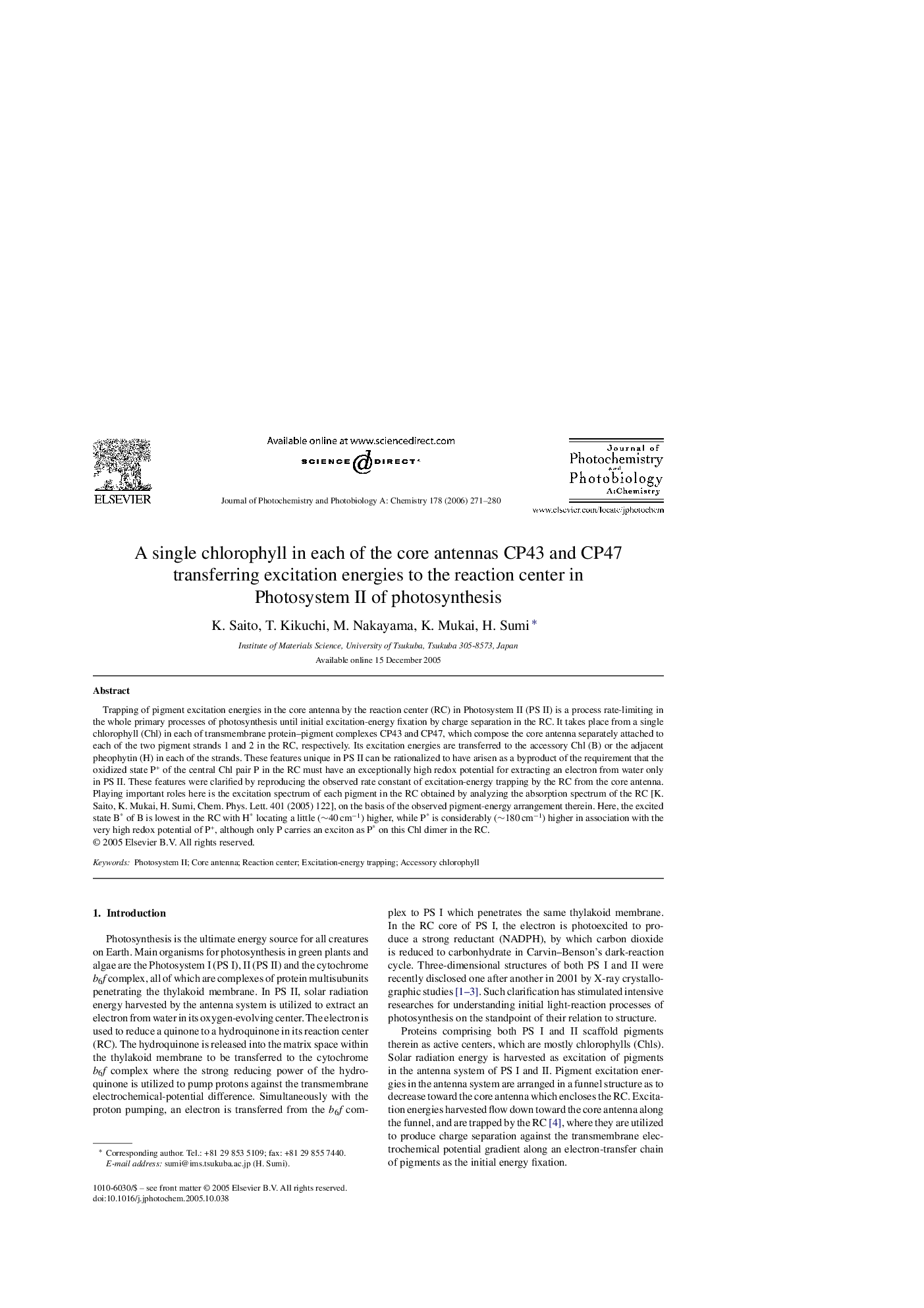| Article ID | Journal | Published Year | Pages | File Type |
|---|---|---|---|---|
| 29360 | Journal of Photochemistry and Photobiology A: Chemistry | 2006 | 10 Pages |
Abstract
Trapping of pigment excitation energies in the core antenna by the reaction center (RC) in Photosystem II (PS II) is a process rate-limiting in the whole primary processes of photosynthesis until initial excitation-energy fixation by charge separation in the RC. It takes place from a single chlorophyll (Chl) in each of transmembrane protein-pigment complexes CP43 and CP47, which compose the core antenna separately attached to each of the two pigment strands 1 and 2 in the RC, respectively. Its excitation energies are transferred to the accessory Chl (B) or the adjacent pheophytin (H) in each of the strands. These features unique in PS II can be rationalized to have arisen as a byproduct of the requirement that the oxidized state P+ of the central Chl pair P in the RC must have an exceptionally high redox potential for extracting an electron from water only in PS II. These features were clarified by reproducing the observed rate constant of excitation-energy trapping by the RC from the core antenna. Playing important roles here is the excitation spectrum of each pigment in the RC obtained by analyzing the absorption spectrum of the RC [K. Saito, K. Mukai, H. Sumi, Chem. Phys. Lett. 401 (2005) 122], on the basis of the observed pigment-energy arrangement therein. Here, the excited state B* of B is lowest in the RC with H* locating a little (â¼40Â cmâ1) higher, while P* is considerably (â¼180Â cmâ1) higher in association with the very high redox potential of P+, although only P carries an exciton as P* on this Chl dimer in the RC.
Keywords
Related Topics
Physical Sciences and Engineering
Chemical Engineering
Bioengineering
Authors
K. Saito, T. Kikuchi, M. Nakayama, K. Mukai, H. Sumi,
